During 1940 and 1941, the first two years of the German occupation of Norway during World War II, 21 small wooden boats set out across the North Sea to Great Britain. Those who attempted the dangerous voyage, known as Englandsfarere—England Sailors—had one goal in mind: to join the Allies in the fight against Nazi Germany. Over the course of this effort to liberate Norway, nearly 100 people in those 21 boats left from the Agder region in southern Norway. Eighteen of the boats arrived safely. Two boats, each with two men on board, disappeared, and one boat was captured by the Germans—all five who were on board were executed or died in captivity. These escapes were undertaken by heroic young men who put their lives on the line, but in the postwar years they received very little recognition.More than eight decades later, Jarle Føreland wanted to re-create the North Sea crossing to acknowledge the Englandsfarere who risked all to join the Allied side in the struggle for peace and freedom in the Second World War. I joined him in this vision and became the project leader. Frode Stokkeland and Willy Pedersen were soon on board as crew members.We would travel in FRI IV, a 22-year-old wooden motor launch, the third boat we had tested. The two previous boats, a 1934 model and a 1954 model, had both proved unreliable during sea trials. FRI IV is a Visterflo sjekte, built in the Østfold region of southeast Norway and powered with a Volvo Penta three-cylinder 18-hp marine diesel engine. It would be an appropriate boat, similar in age to the boats used during WWII. We carried out many sea trials, training to work as a crew in a small boat, getting to know the strengths and weaknesses of our equipment, and strengthening our confidence that we would succeed. Our plan was to follow the route and the story of Finn Narvesen, who fled with Finn Frodesen, Thorleiv Moe, and Hans Syvertsen in SWAN, a 22′ sjekte, from Kristiansand in Agder on September 21, 1940. We would carry Norway's official postal flag as a sign that we had a letter from the Norwegian government on board.
Join The Conversation
We welcome your comments about this article. To include a photo with your remarks, click Choose File below the Comment box.

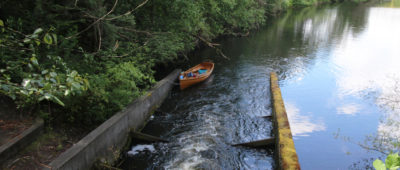
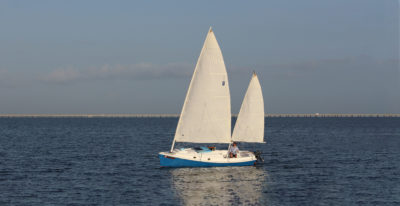

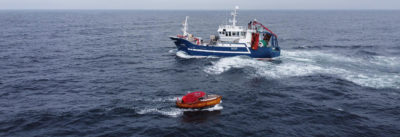

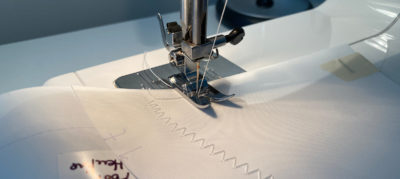
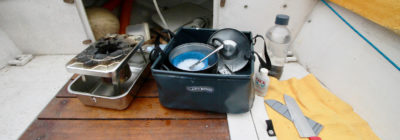
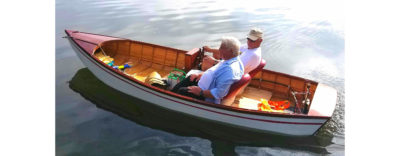
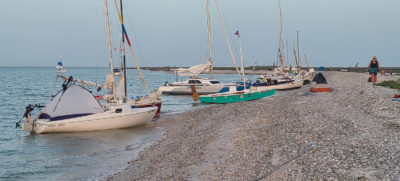
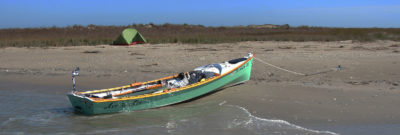
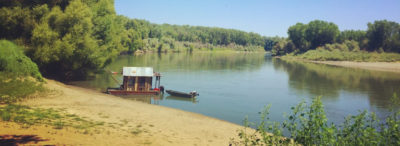

This was a great adventure story reminding us of the long history of brave humans in small traditional boats seeking refuge and freedom and, in this case, freedom to fight tyranny, which still continues to this day. Indeed, I would suggest that “small” traditional boats have perhaps been the primary vehicle over time for humans seeking freedom, new lands, new resources, and adventure.
I was surprised to learn the Germans had jet fuel in 1940!
I believe that jet fuel is just kerosene .
A fantastic read and adventure!
A ‘snekke’ (‘snipa’ or ‘double ender’) is a truly impressive vessel and can handle essentially any type of weather – and do it while sipping diesel. You will not get there fast, but you will get there safely.
I know some that refuel only once every summer. Wish we’d see more of them here in the US.
Farther north in Norway, fishermen made so many trips back and forth to the islands north of Scotland during the war that the route became known as the Shetland Bus. They had larger boats–40′ or so, with big one-lunger diesels, and they ran from October to April (that’s right, in winter), to reduce the chances of being spotted by the Germans. They took people out of the occupied territory, but also brought people and supplies to the resistance. David Howarth, who became a very well-known historian, wrote one of his early books (maybe his first) about his association with the effort. It’s title is The Shetland Bus, and it’s available still,